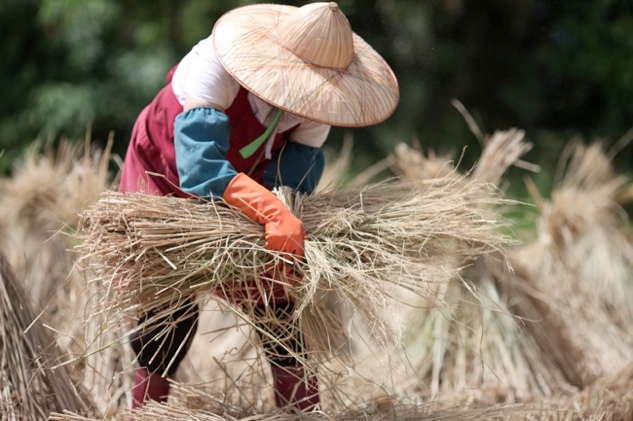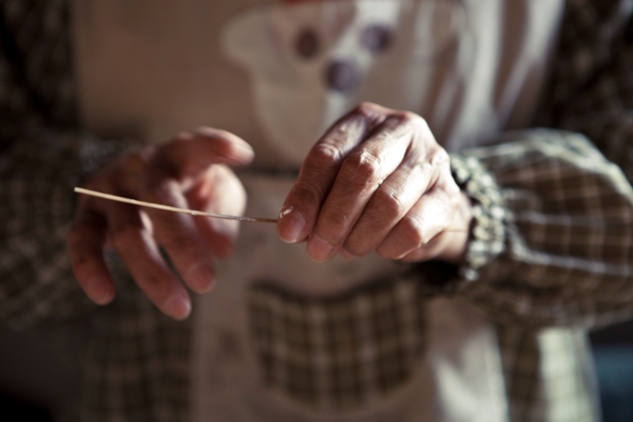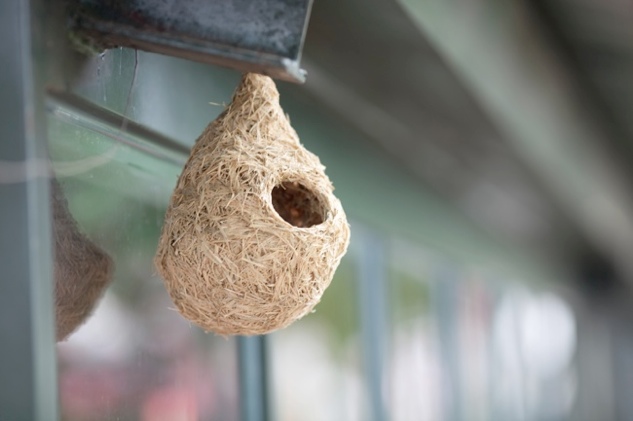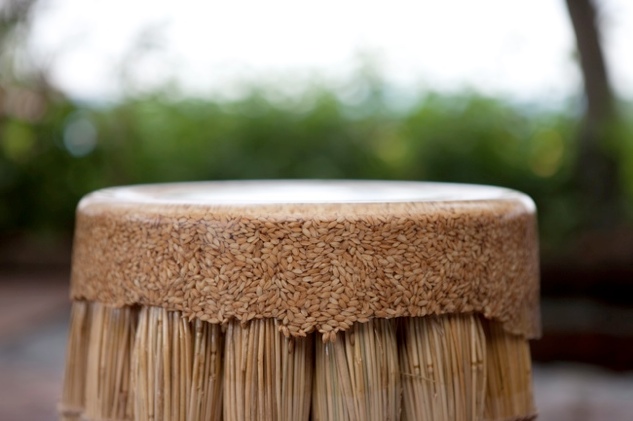

The Jenju Village Community, also known as "Jane’s Pearl," is the ancestral site of the Pingpu Kamalan Tribe. The Dongshan River runs directly through the community, making it ideal for residents to preserve its rice paddy-based industry, which accounts for up to 136 hectares of the area in and around the village. After every rice harvest, a huge amount of rice straw is left behind, and for farmers of old, this was an essential building and material supply. However with the changing times, this supply of straw is no longer needed for building, and has become mostly superfluous. For the preservation of the village’s rural culture and ideals concerning the environment, recycling and other factors, the straw received from the fields will now be used by the community to promote the material itself as a wonderful source of inspiration for use in arts and crafts. A museum, as well as a DIY shop, has been established so that visitors may also experience the art and craft of straw.
At the shop, friendly faces are usually found creating small stools, winding straw rope around and around, while chatting about the day’s events. As soon as you enter the shop, flocks of sparrows may just fly out and around the museum. It is because a kind Auntie at the shop has left rice shells and straw to attract the sparrows. The sparrows stay in groups, making homes in the rafters and sitting on the straw machines. Visitors can enjoy the songs they sing, allowing themselves to be ever more embraced by the warm nature of the environment in and around the museum.


It can be considered a little taste of childhood, like when you used to chase dogs who in turn chased chickens through the fields, or when you would tease little sparrows that lived near you. Sparrows are inherently consumers of grain, and as such, early farmers had to protect their crops; this is how the scarecrow was born. The use of scarecrows to rid fields of crop destroying sparrows is considered to be the more civil approach, as at one point in history a ‘Kill the sparrow’ campaign was launched to make sure they didn’t return. Even though this campaign was successful at saving the grain and rice fields from the sparrows, because the drop in the sparrow population was so great, and no sparrow to eat them, the locust population ballooned and swarms of the insects destroyed the fields anyway. This is what is considered to be the human factor in the manipulation of the environment, and our self-righteous consequences. Now, the sparrow is no longer considered to be the destroyer of rice fields, but is considered to be integral to ecological balance. As we learn from nature's mentors, the concept of "symbiosis" can be seen vividly.
Taiwan is currently facing many agricultural changes, as certain types of materials and products are being removed from their areas. Jenju village communities are promoting the symbiotic concept of peaceful coexistence with nature, encouraging us to return what we have expelled, so that nature may begin again to produce and provide us with essentials, and creating a naturally endless process. Dry, straw-based materials produced from rice fields can be designed into practical home furniture, but can also be designed to be a bird feeder, and as such begin to realise the concept of symbiosis in practice, so that this kind of natural design can be spread throughout the country. Expanding on the bird feeder design is the Story Nest, which can be used as a meditation retreat, a private reading space, or as a place where children play.
Bird Feeder


Materials: Straw, bamboo strips, steel wire © Design by GR: NAGAAKI & DHHS: GINA
Rice and sparrows in nature have always had a sort of interdependent relationship, so the use of Jenju village community’s straw weaving techniques to produce this bird feeder seemed ever so natural. Yilan’s scenery from a house in the city is usually viewed from a balcony or rooftop. This means that between the busy city and one’s own house, small city sparrows may also have somewhere to go to become someone’s kind little neighbour.
Story Nest
Trapped within the hustle and bustle of the urban jungle, most urbanites spend a lot of time during their day in search of a quiet corner to rest and escape the turbulent nature of the city. This design is aimed at providing a private sitting room, much like a birds nest, a pure land of sorts. Enjoy a novel in this confortable environment and you may feel as though you’ve been whisked away in the world of Alice in Wonderland. This is not only a great place for children’s privacy, but it is also a place for children to call their own little secret, and for others to reminisce on doing the same. This cozy cradle of sitting room can rid your mind of worries, or give your mind wings to fly towards your personal dream kingdom.
Straw Stool
Material: Straw, epoxy resin © Design by GR: NAGAAKI & DHHS: GINA
Rice or grain products have advantages and disadvantages concerning its usage as a design material. One of the advantages of rice straw, rice bran or rice itself could be its interesting, rich texture. However, the major disadvantage of these materials is they do not possess enough long-term durability. This is where the use of an epoxy resin comes in, improving the resilience and durability of the straw and rice materials, so that these materials may serve broader purposes and be transformed into items used in home on a daily basis.
The Exhibition in Lanyang Museum until 09/26/2010 © Design by GR: NAGAAKI & DHHS: GINA




0 意見:
張貼留言